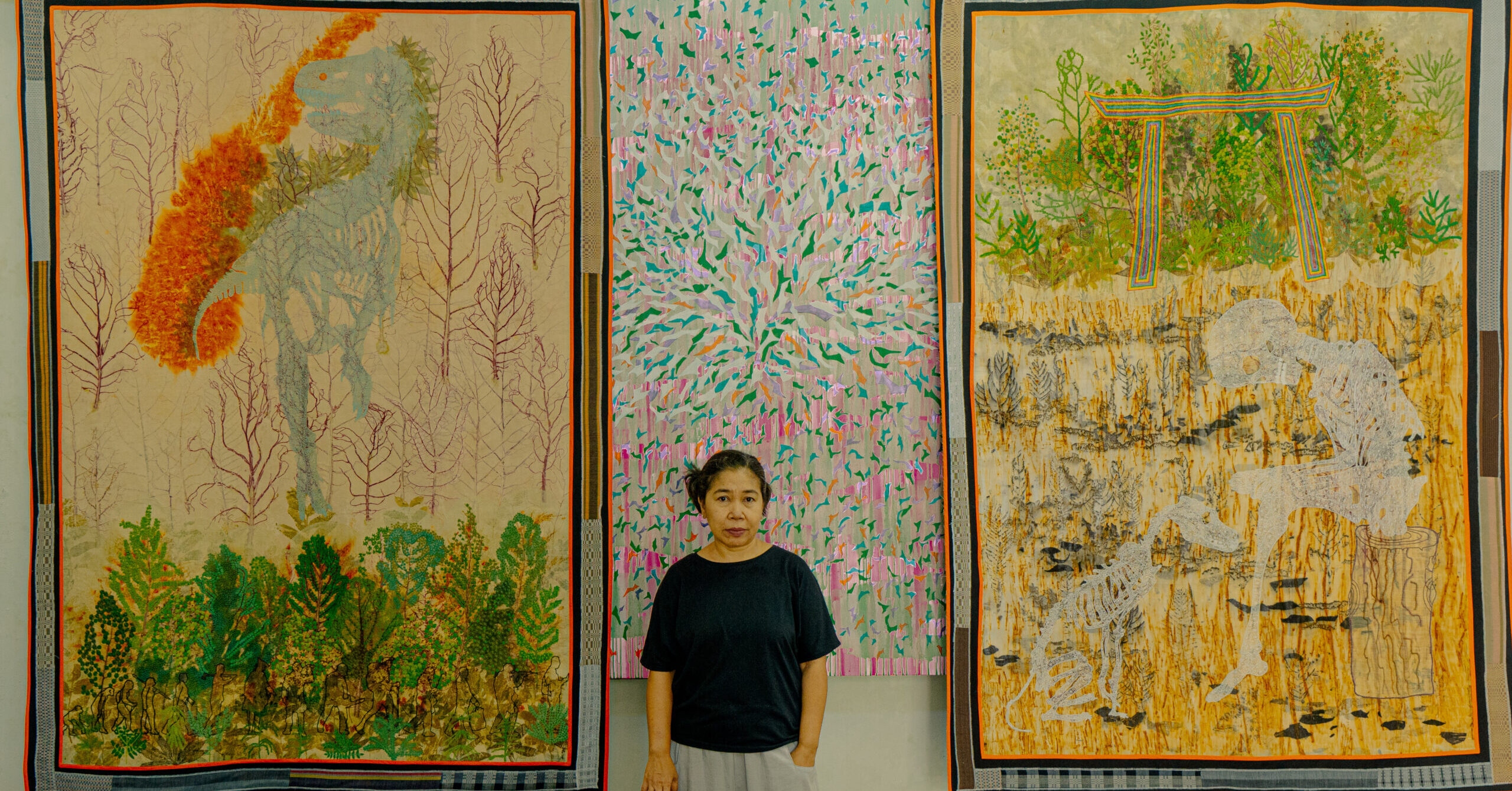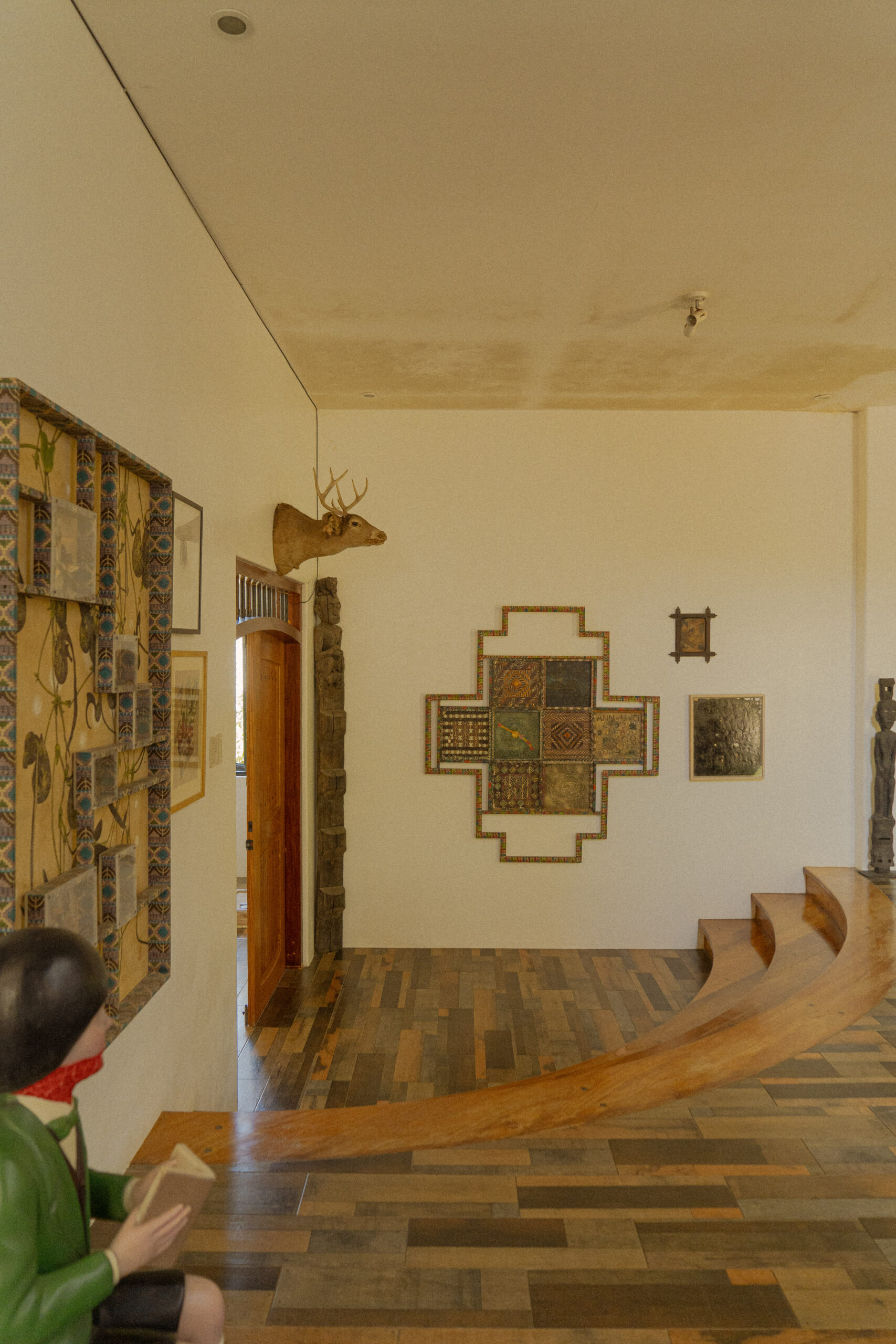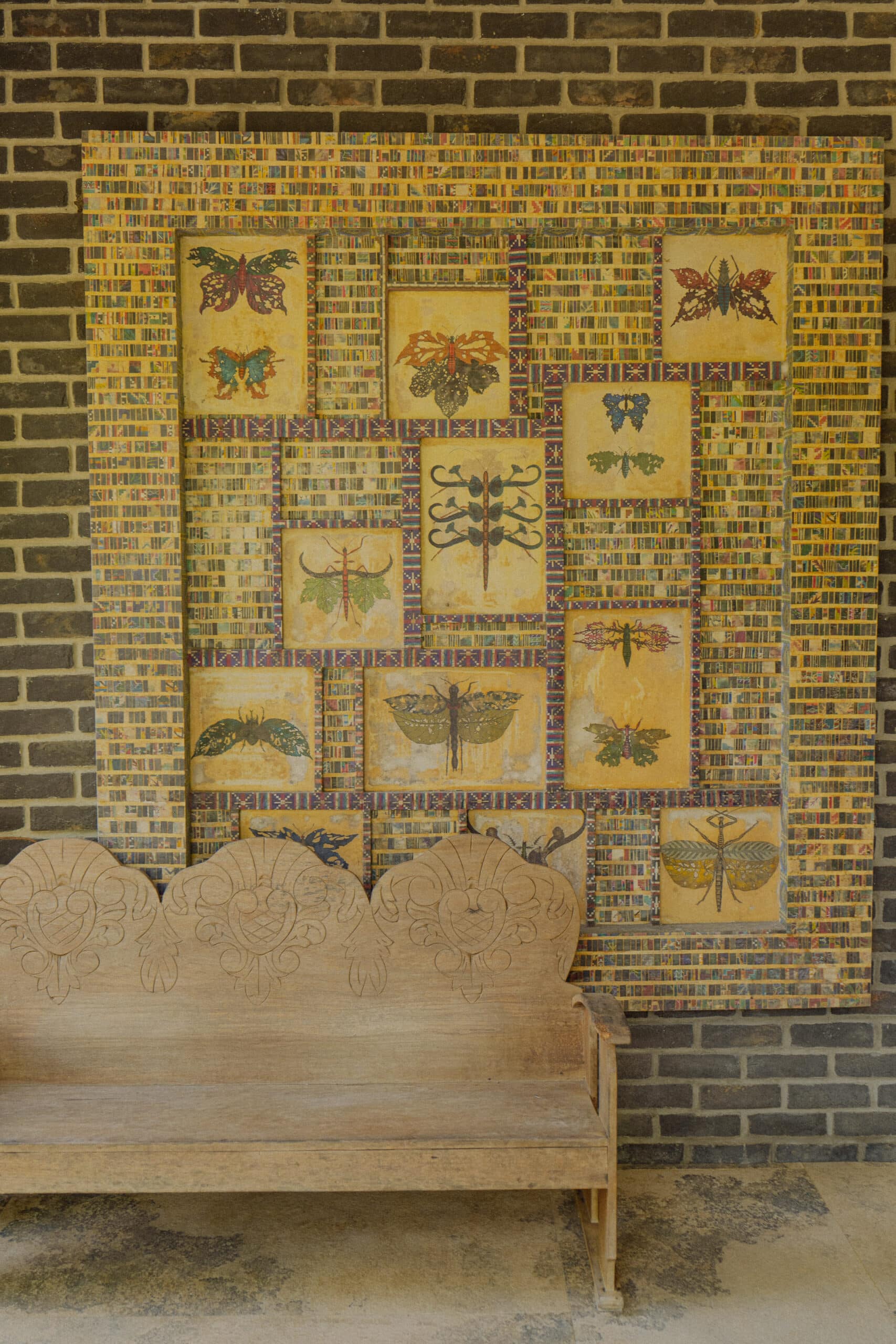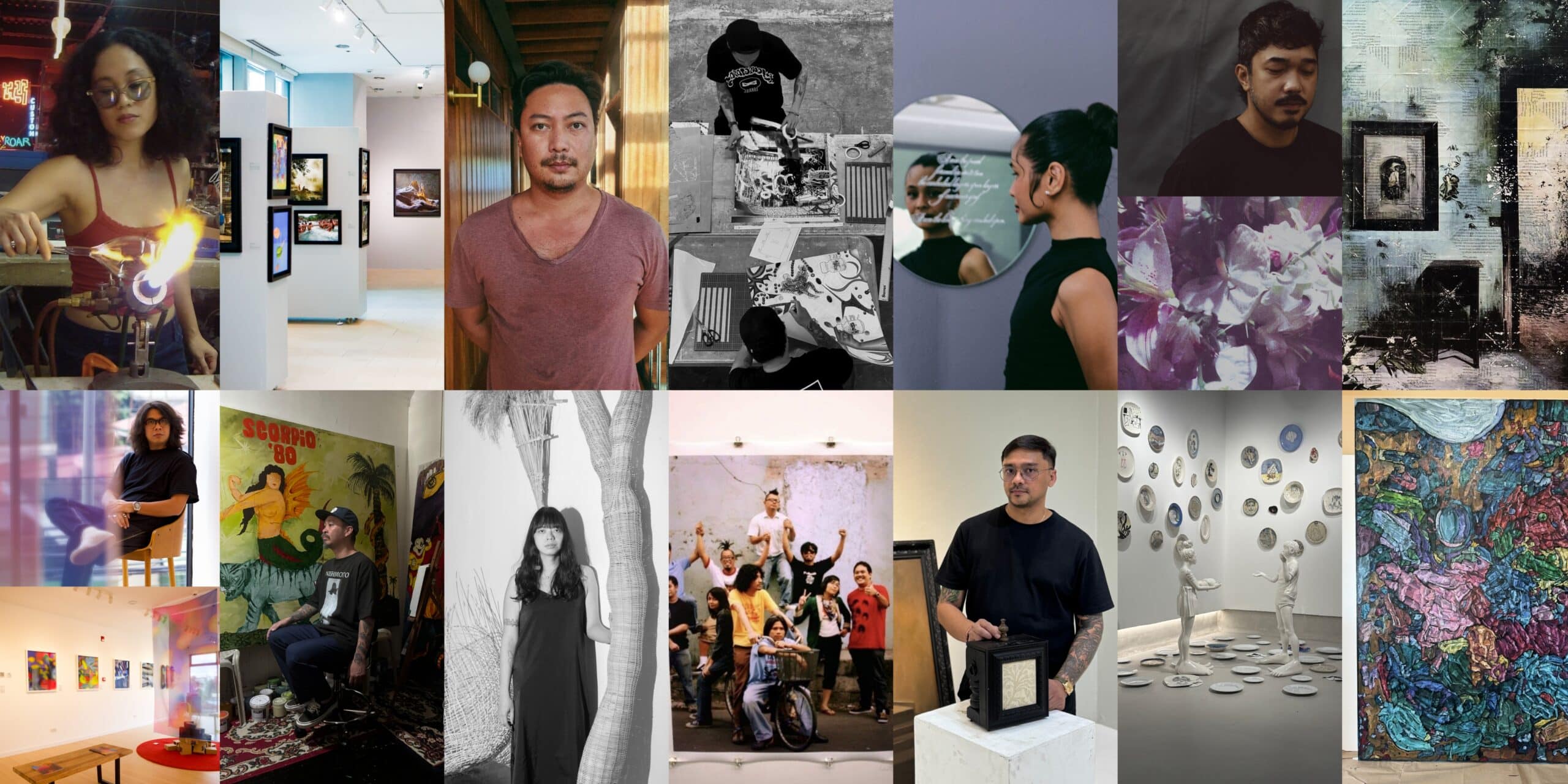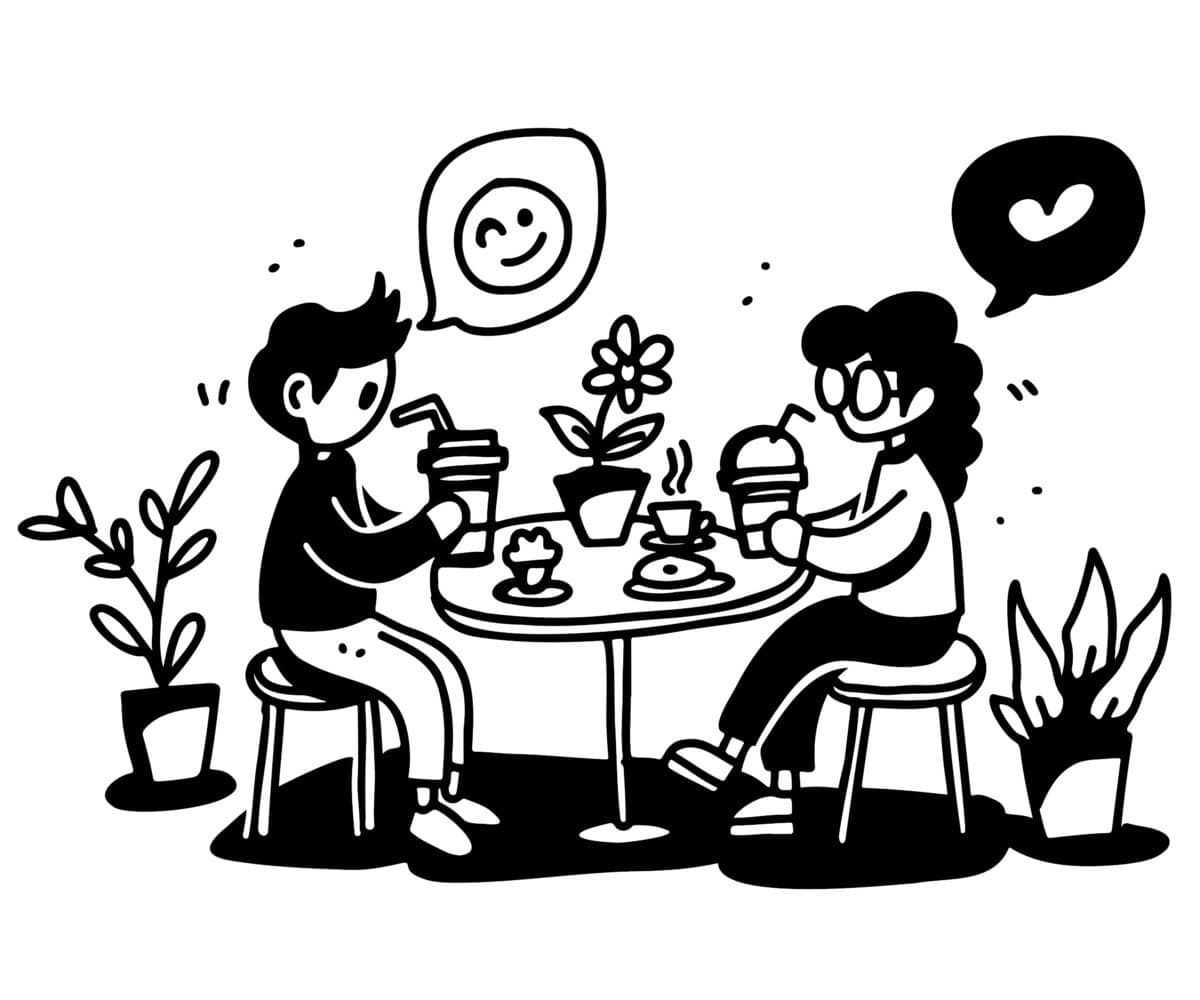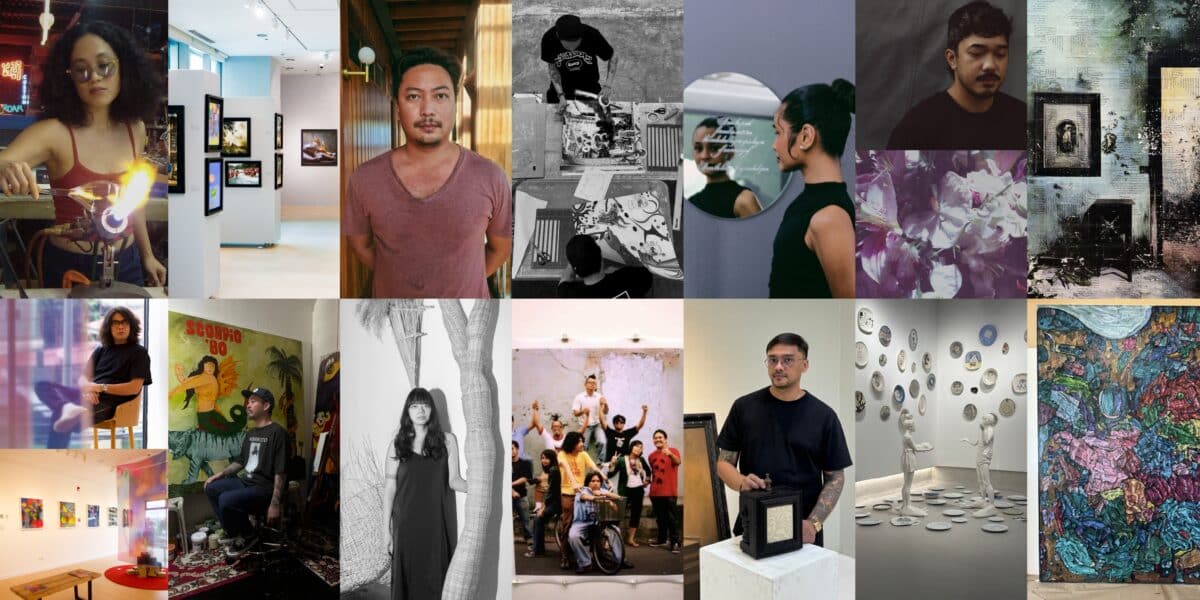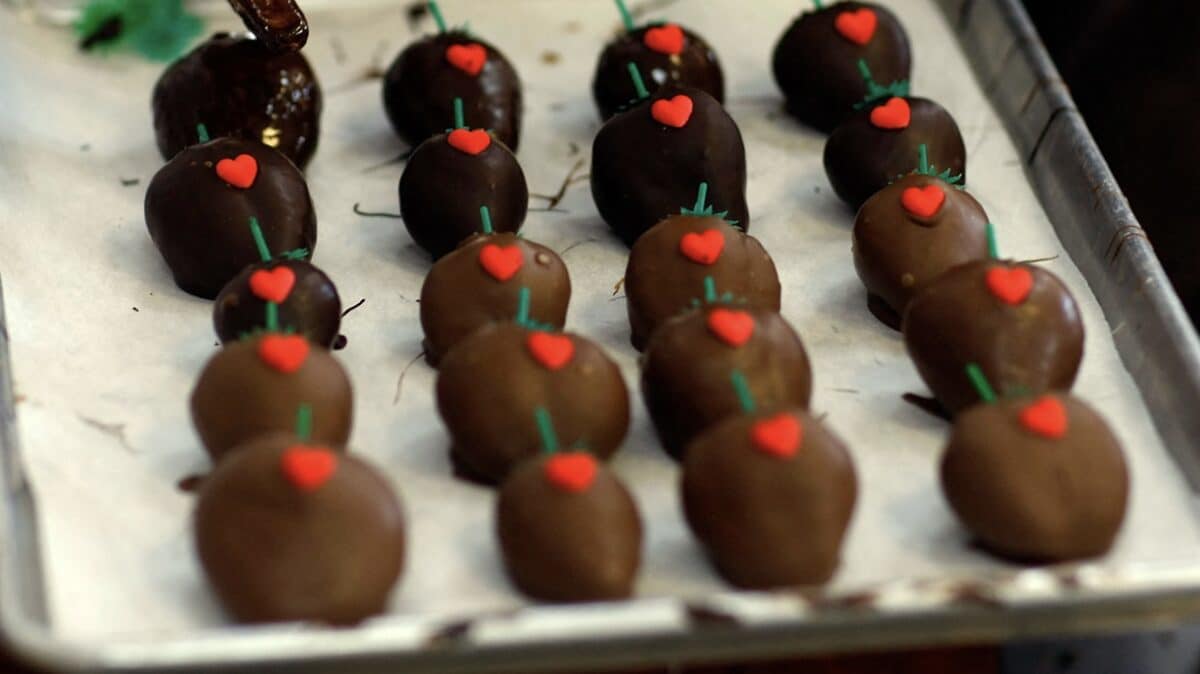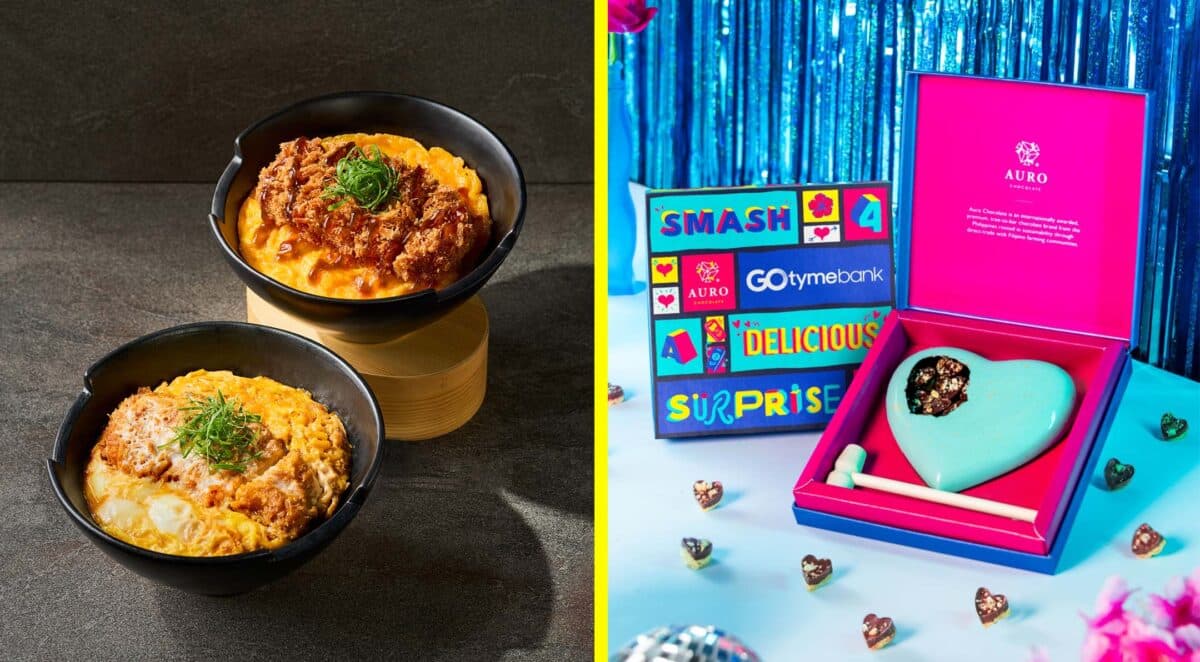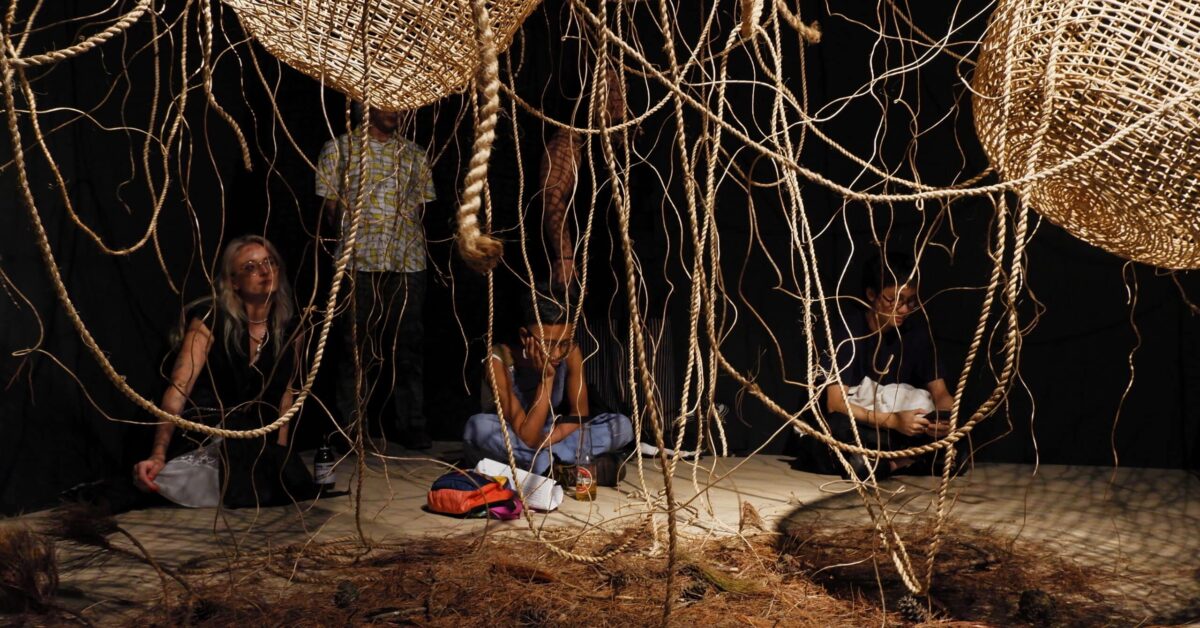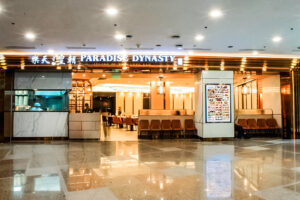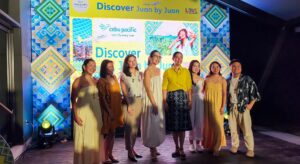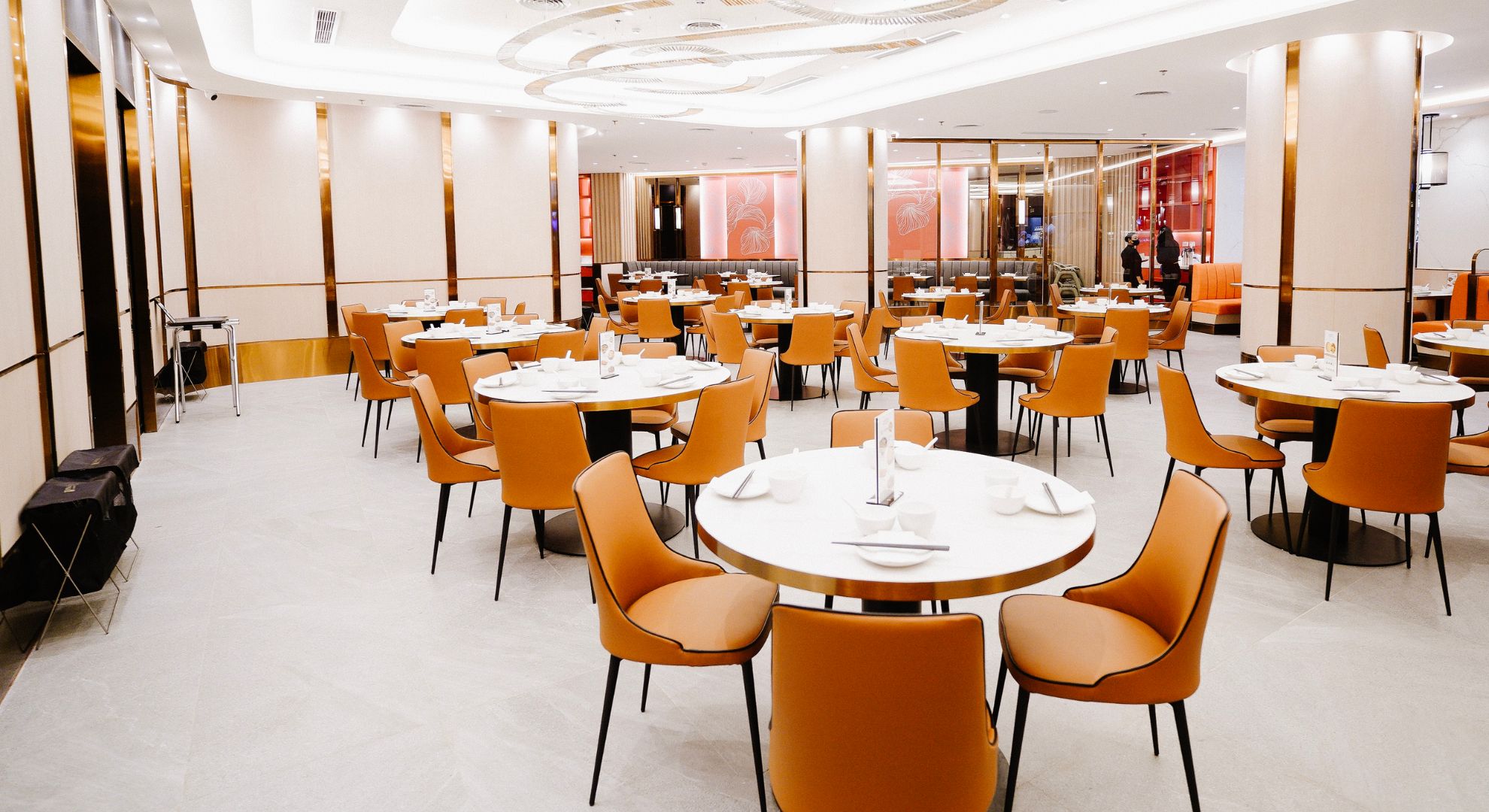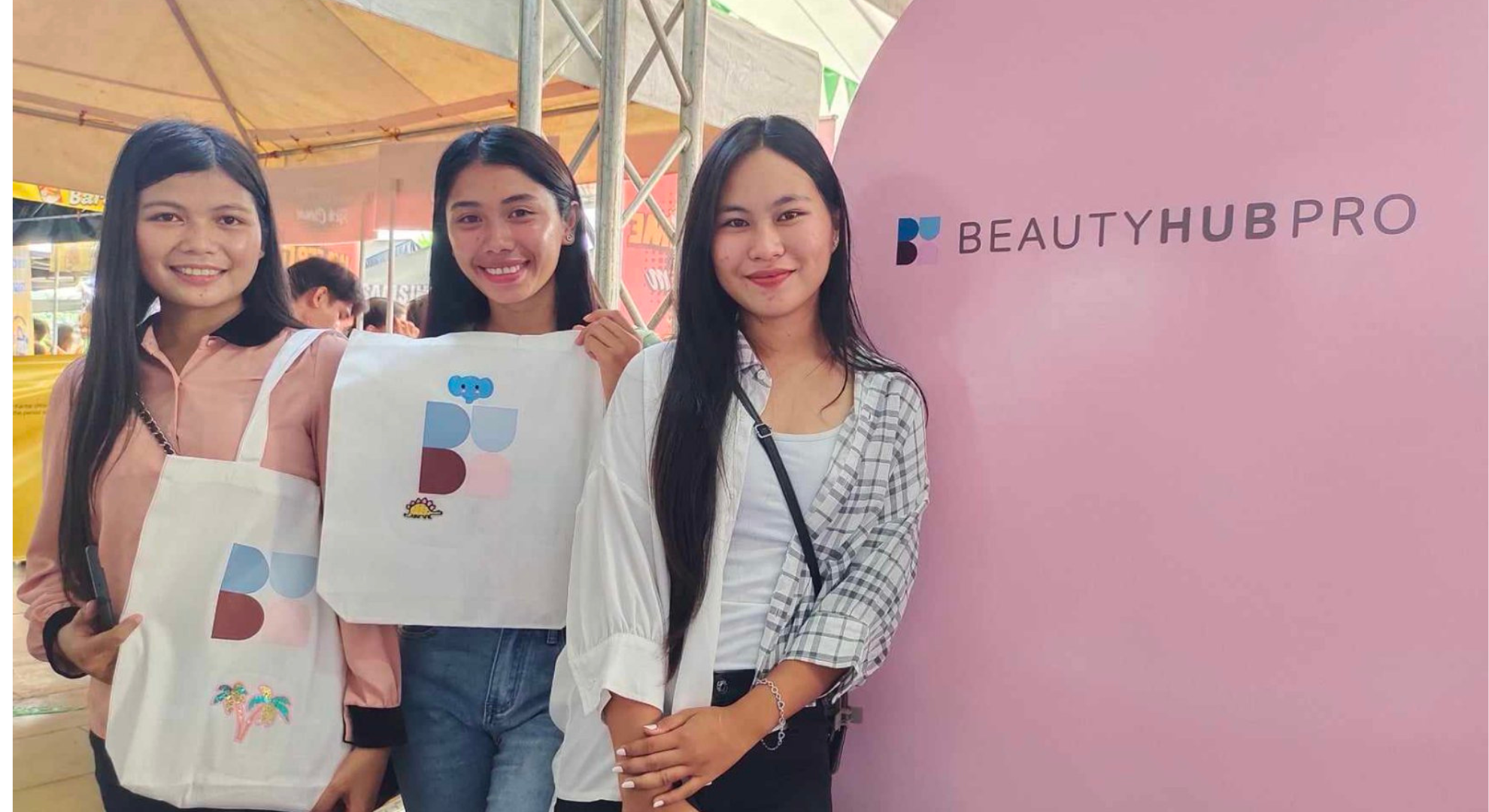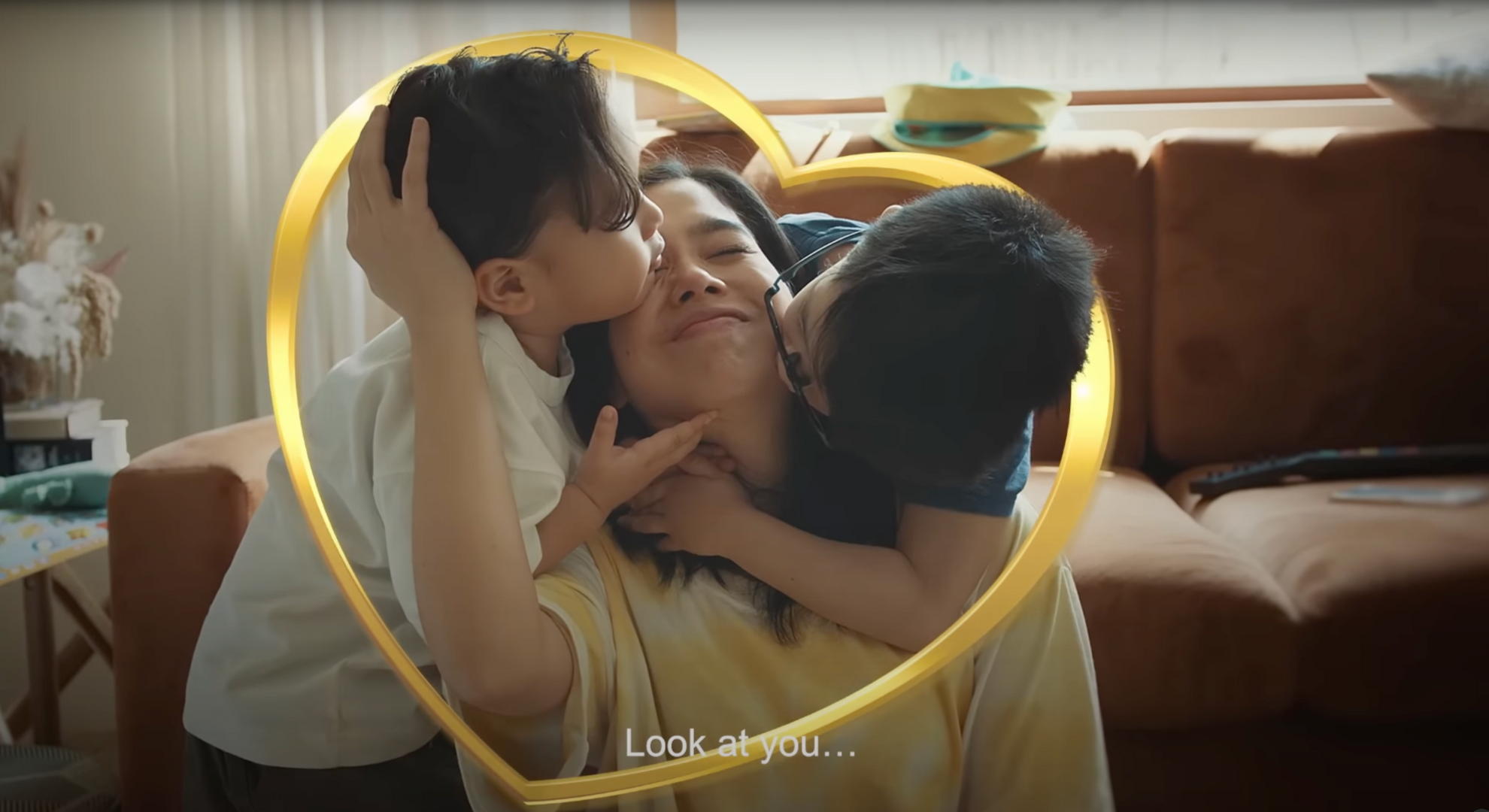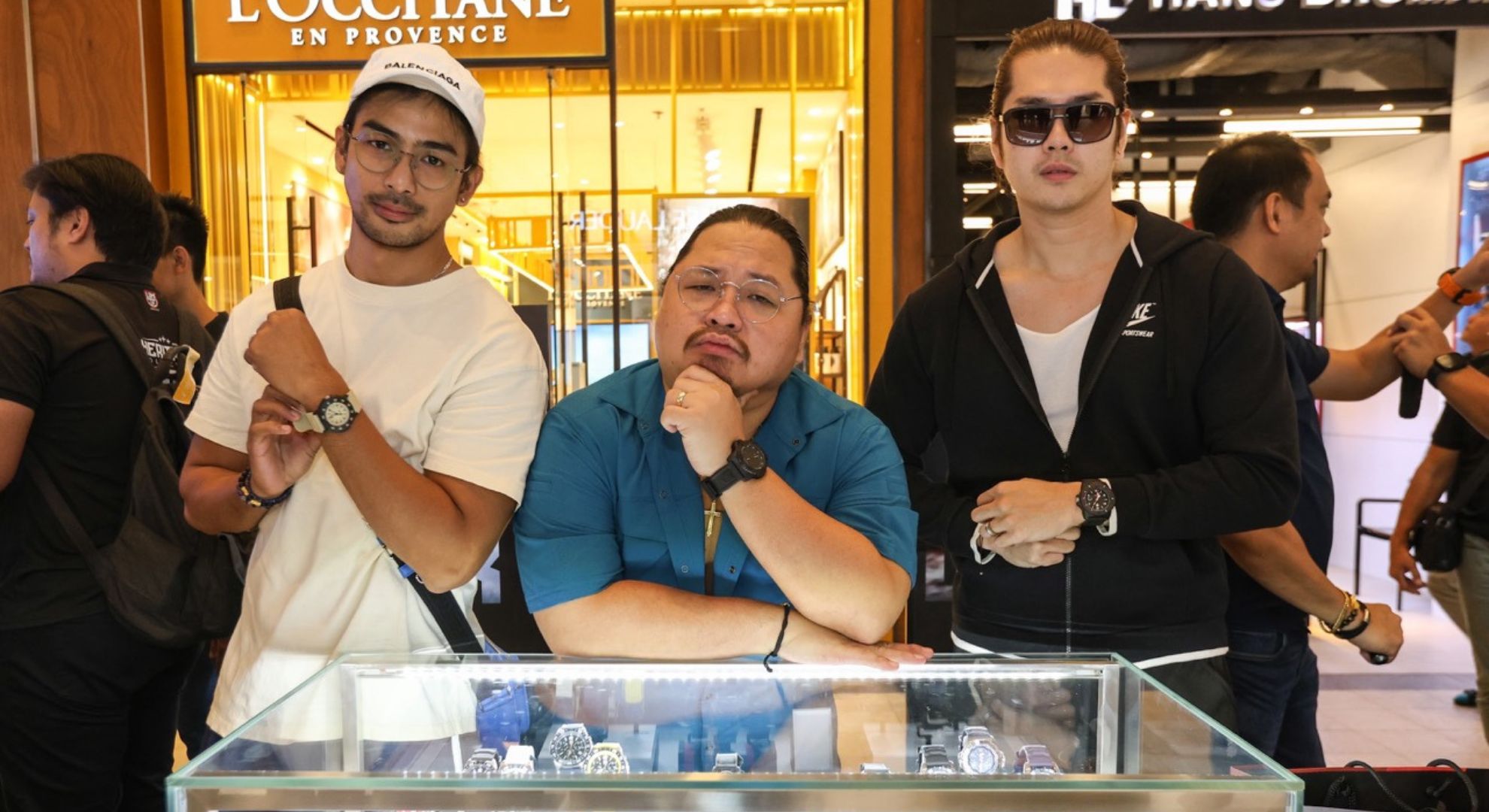Amid a global environmental crisis, Geraldine Javier weaves a dialogue between the natural world and the human experience
Nestled on a sprawling terrain beneath the watchful gaze of a lush tropical mountain, Filipina artist Geraldine Javier’s home and studio in Cuenca, Batangas embody an Arcadian ideal. Just a few hours’ drive from Manila, Javier has cultivated her own safe space, one that allows her to constantly create and push the boundaries of her distinct visual language as well as foster a community that is nurtured and sustained by nature.
Deeply committed to environmental issues, Javier is moved by the urgency of the global crisis. Rich in natural elements, her work explores religious, ecological, political, and cultural themes. Her collaborations with local artisans use natural dyes and fibers, creating pieces that emphasize humanity’s delicate relationship with nature.
Born in 1970, the visual artist’s work is deeply rooted in her visceral connection with the natural world. One of Manila’s most prominent and widely collected artists, she uses elements and objects from nature as “characters” in her texturally rich, conceptually evocative, and painstakingly crafted fiber artworks..
With over 30 solo exhibitions across the Philippines, Malaysia, South Korea, Singapore, Germany, and China, Javier continues to investigate the relationship between humanity and nature, particularly in light of the escalating global environmental crisis.
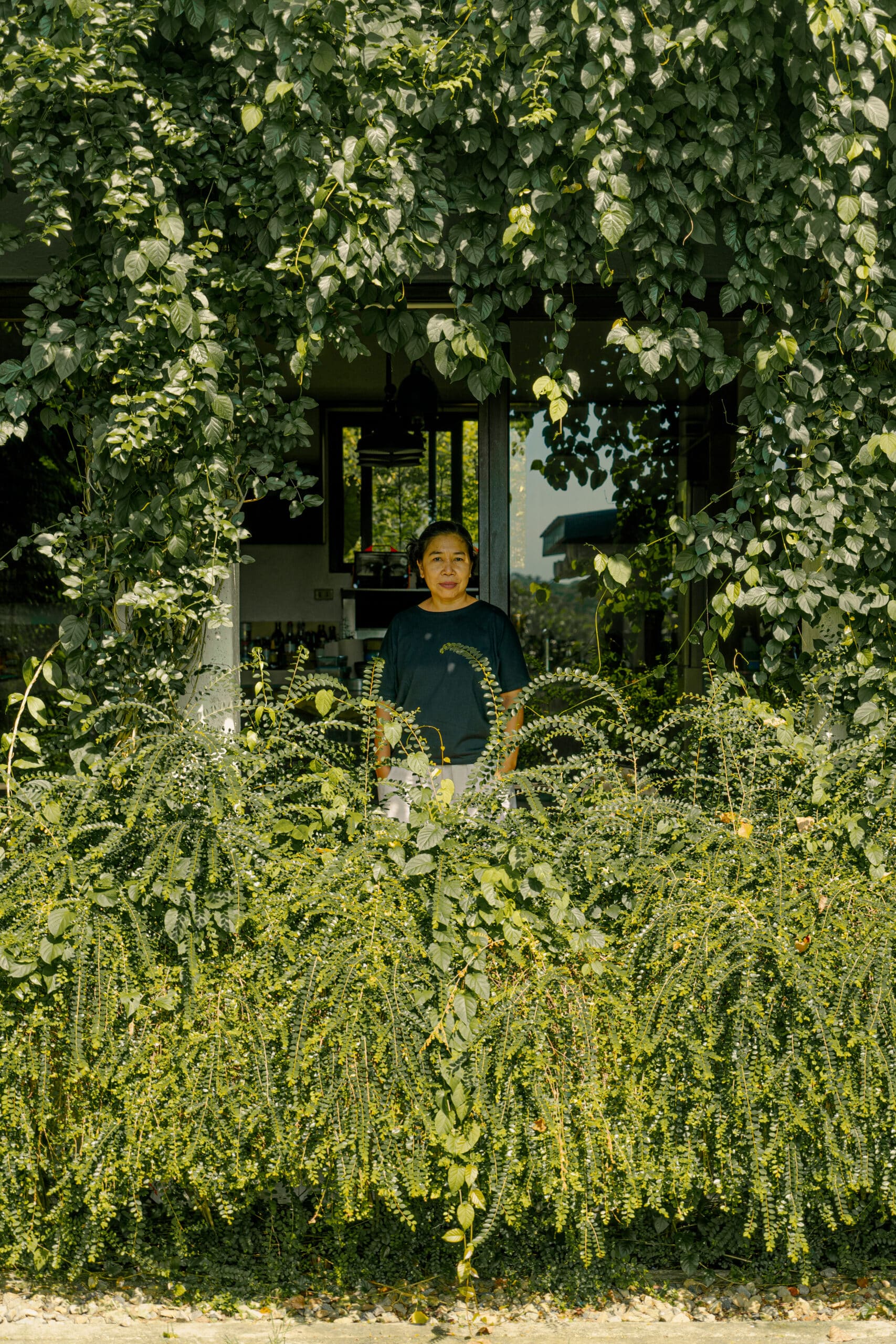
READ: What is ‘Bayotic Refugia’? Trans artist Isola Tong explores ecological healing
Javier’s journey to becoming a visual artist was anything but conventional. Her family originally wanted her to pursue a career overseas as a nurse but her passion for art was stronger. As a compromise, she completed her nursing degree at the University of the Philippines before following through with fine arts.
For Javier, creating art is existential. Even as a student, her work reflected both her urban environment in Manila and her deep-rooted connection with nature, particularly her hometown of Candelaria in Quezon. Her art, grounded in her awareness of interconnectedness, reflects a blend of environmental activism and an exploration of life’s dynamic relationships. “We were taught that everything is interconnected,” she says.
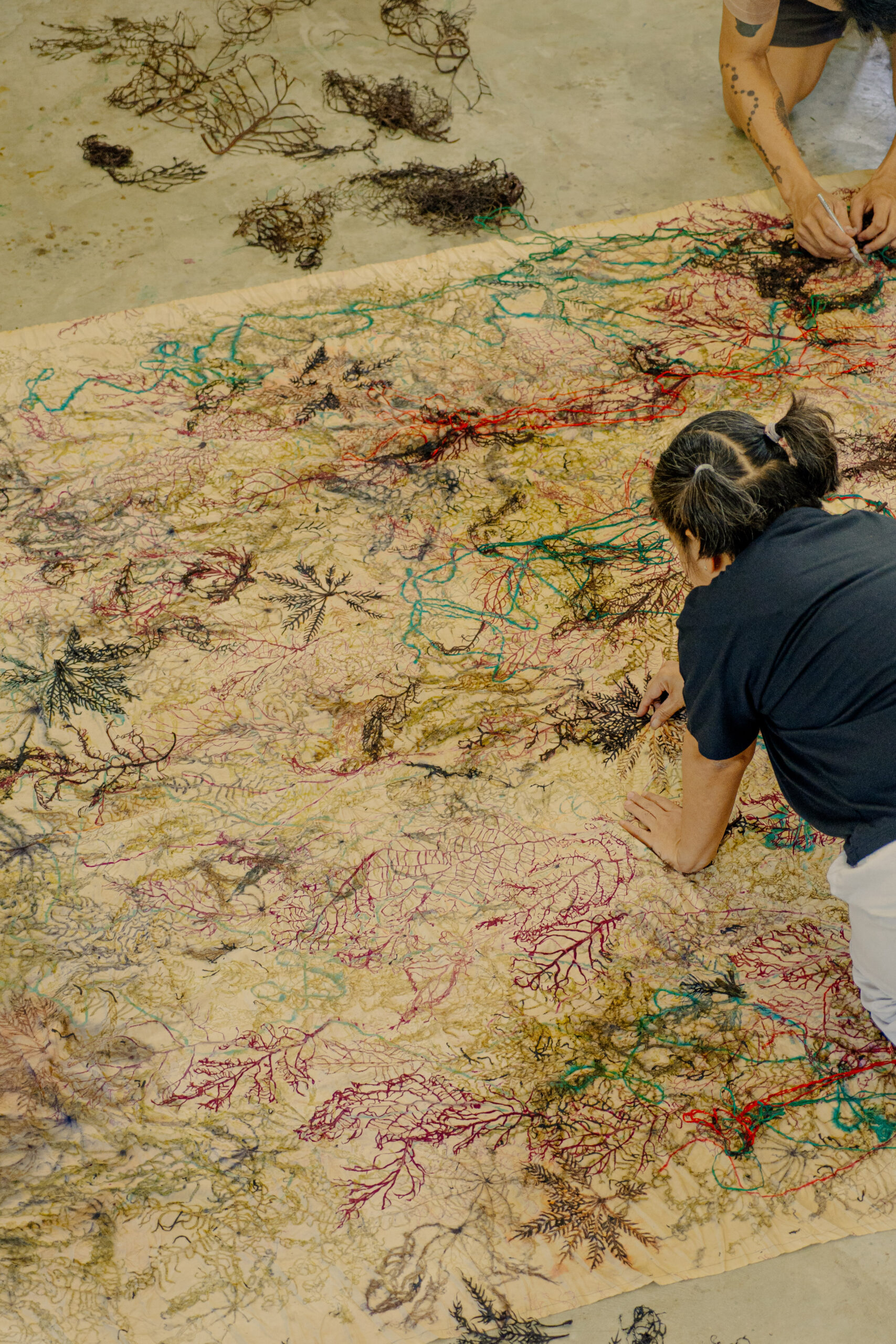
Since establishing her home and studio in Cuenca, Batangas, her close collaboration with her tight-knit community of local artisans has led to the creation of striking mixed media pieces that incorporate plant-based dyes, other naturally occurring materials, and meticulous fiber art processes.
In December 2024, Silverlens Gallery presented Javier’s “The Story of Plants Without Us” at Art Basel Miami Beach. Her five-panel fiber art installation poignantly reflects the interconnectedness of humanity and the natural world, using eco-printed tapestries layered with intricate embroidery. In this interview, Javier speaks with visual artist and curator Patrick de Veyra to share insights into her life as an artist, activist, and community builder.
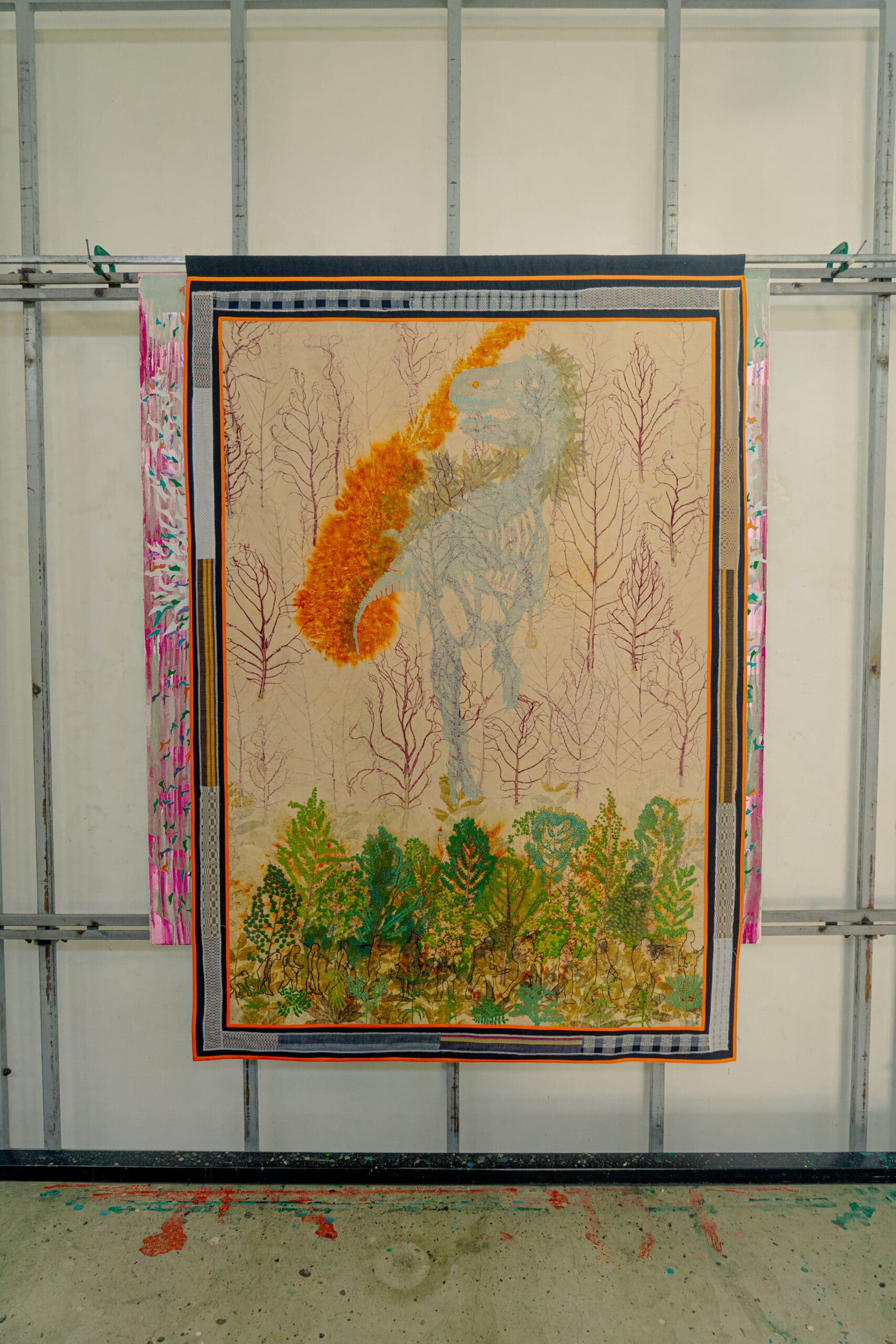
Patrick de Veyra (PDV): Can you walk us through your unconventional journey to becoming an artist?
When I was in elementary school, we had a subject called practical arts where we made sculptural works, projects on paper, and other craft-based activities. My classmates struggled with this subject, but I found it rather easy and enjoyable. In fact, I ended up producing some of my classmates’ projects. Early on, I discovered that I had a natural inclination for crafts and a deep love for working with materials.
Despite my passion for art and crafts, my parents didn’t see it as a viable career. This is why I decided to pursue nursing at the University of the Philippines. At the time, I was afraid to assert my own choice because I didn’t have the confidence as well as the assurance that I would become a successful visual artist.
My parents hoped I would go abroad and build an international career as a nurse—a scenario that I couldn’t see myself in. Purposely failing the international licensure exam—an act of self-sabotage—was the only way I could remain in the Philippines and eventually pursue my love for the visual arts.
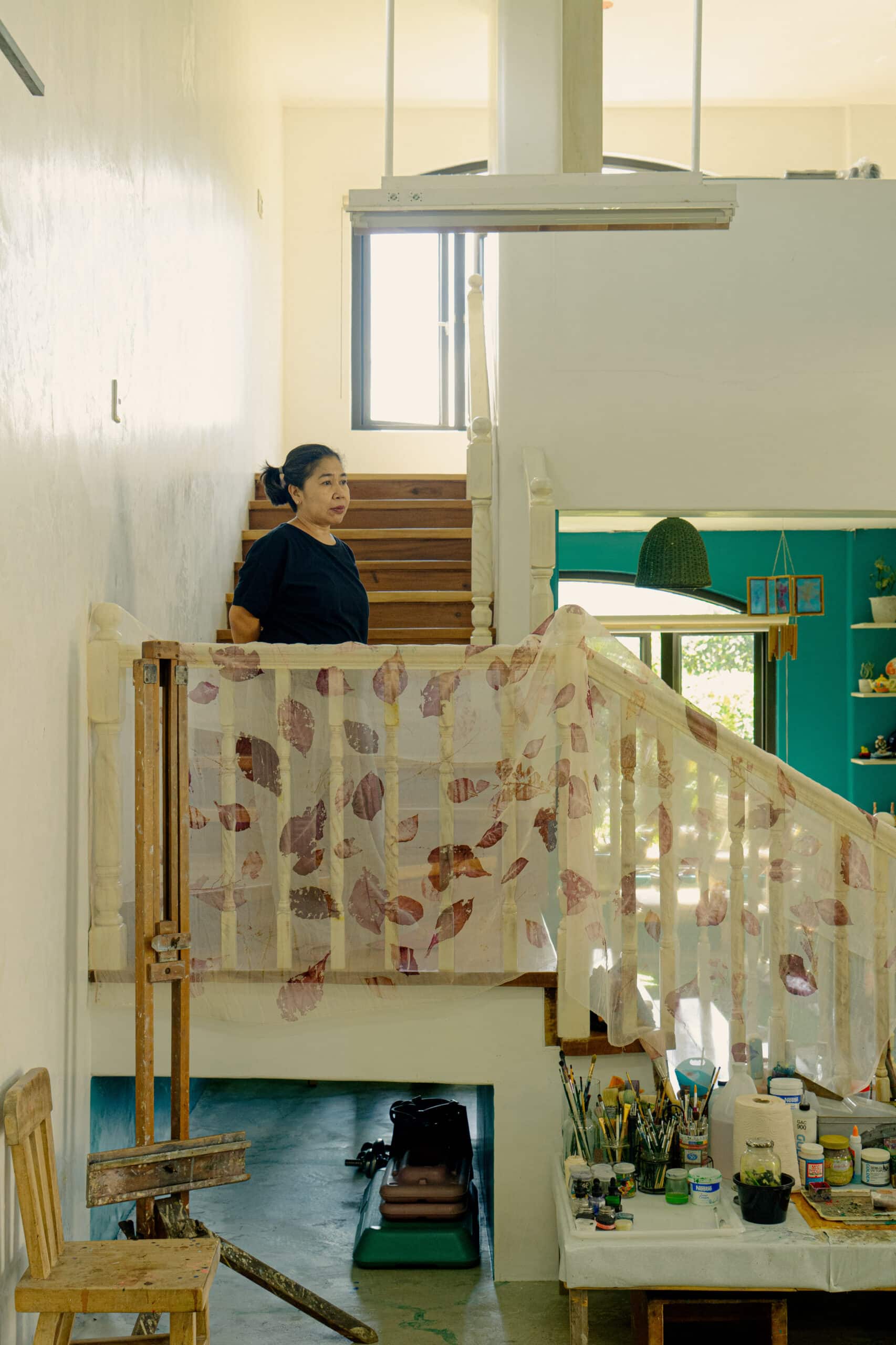
PDV: You’ve shared a deep connection with your hometown. How has this sense of rootedness influenced your studio practice?
When I was a student at the UP College of Fine Arts, I had little understanding of what “contemporary practice” meant. There wasn’t much literature available to help me explore this concept. At that time, there weren’t a lot of contemporary art museums. And unlike art schools abroad where students are often introduced to a wider range of materials and technologies—some even study specialized crafts like jewelry-making or dressmaking—my training had largely been the usual oil painting, acrylic painting, collage, etc. I remember visiting secondhand stores in Avenida to search for ready-made objects that I could incorporate into my work. Eventually, I also included embroidered elements in my paintings.
Growing up in Candelaria, I was also deeply influenced by neighbors who kept a preserved crocodile in their home. It was like a personal museum, and I remember being fascinated by the atmosphere and the strangeness of the space. This experience left a lasting impression on me, and over time, elements from the natural world began to make their way into my work as well.
READ: The Kifu Augousti-Patrick Coard wedding is a marriage born out of love and creative energy
Lala Singian (LS): What led you to explore craft processes in your studio practice? Is it driven by a curiosity about materials, or is there a theoretical motivation?
My relationship with my materials is essential to me as a painter. I work with appropriated imagery, borrowing images from sources like magazines. However, when I appropriate an image, I make sure that it is placed in a new context. If I could not remove the image from its original context, I choose not to appropriate it. I paint with a level of naturalism or realism that serves the visual narrative I want to convey, but photorealism has never been my goal.
My use of found objects, sourced from secondhand stores in Avenida, reflects the character and atmosphere of my immediate environment in Manila. Yet, I still feel a certain disconnection with these works because I’ve never truly seen myself as a “Manila girl.” I’ve always considered myself a probinsyana, a girl from the small town of Candelaria. Whenever I needed to reconnect with my roots and nature, I would travel back and forth between Manila and Candelaria, gathering natural objects to incorporate into my work. This back-and-forth journey was, to say the least, challenging.
When I finally settled in my studio and home here in Batangas, my practice began to flourish.
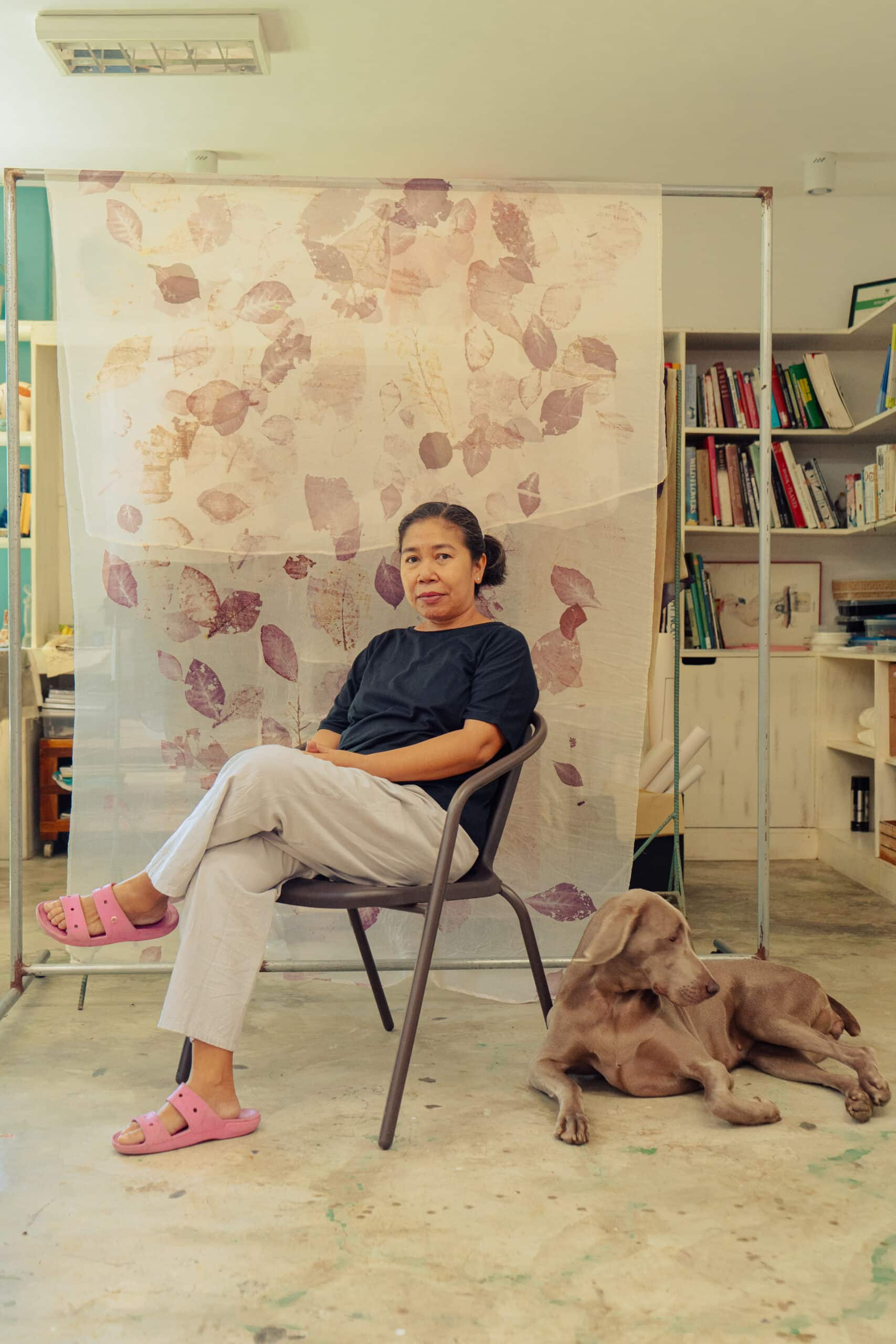
PDV: Could you walk us through your creative process?
My work incorporates a lot of layering. This is why I don’t resent my time as a nursing student. When I was studying, we were taught not to view the human body as one-dimensional. In fact, at UP, nursing was taught with a strong sense of activism.
We were encouraged to ask questions like, ‘What caused this patient’s illness? What are the underlying factors contributing to their health issues?’ We were taught to see the interconnectedness of everything—that the cause of an illness might be emotional, social, or even political. That all things are interrelated, and one problem can have far-reaching ramifications.
I apply this same approach to my art-making. My layering process reveals both the beautiful and the ugly, even my mistakes. And though you may not see every layer in my work, you can still sense the richness of the process. The act of erasing, editing, and concealing creates something unexpected. Ultimately, my work reflects my fearlessness in confronting the many layers within it.
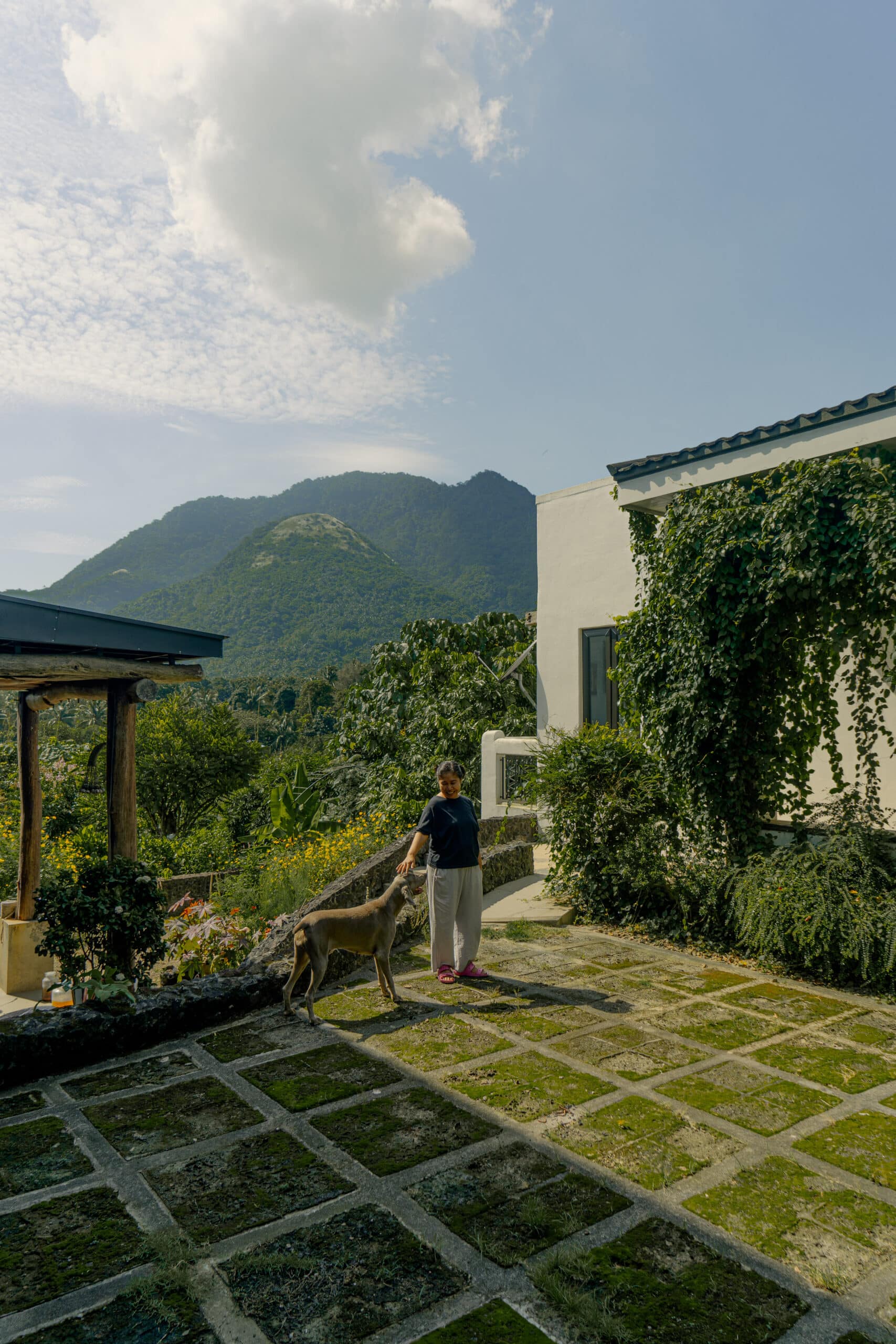
PDV: What’s the most important lesson you’ve learned from nature?
Now that we are facing an environmental crisis on a global scale, I feel that being unbothered or relaxed about the state of our environment is foolish. In the back of my mind, I constantly remind myself that the environmental crisis is already staring us in the face. There is a clear and present danger.
This is why my studio practice is centered around nature. I have chosen, as much as possible, to make my practice completely natural in terms of processes and materials. By doing so, I am able to feel the depth of our connection with nature.
Take eco-printing, for example. You have to respect each season because what I’m working with are living things. They grow, mature, and die. It raises the question, ‘At what stage, as an artist, do I intervene in the life cycle of a tree or shrub?’ That’s why I don’t mindlessly harvest. I need to be respectful of the biological processes that each plant undergoes. You must accept the limitations of the rainy season and be aware of the possibilities that come with summer. Having a sense of acceptance and awareness forces us to be creative.
When I used the Talisay plant for eco-printing, it initially registered simply as a leaf. But because I wanted to use it differently to tell a specific visual narrative, I found ways to transform it. When I skeletonized it, I realized it could represent a burnt tree or become a motif in a work addressing deforestation. And when I grouped the skeletonized leaves together, they resembled mycorrhizal networks.
Ultimately, our studio practice is a choice—whether or not we will confront the environmental problems of our time.
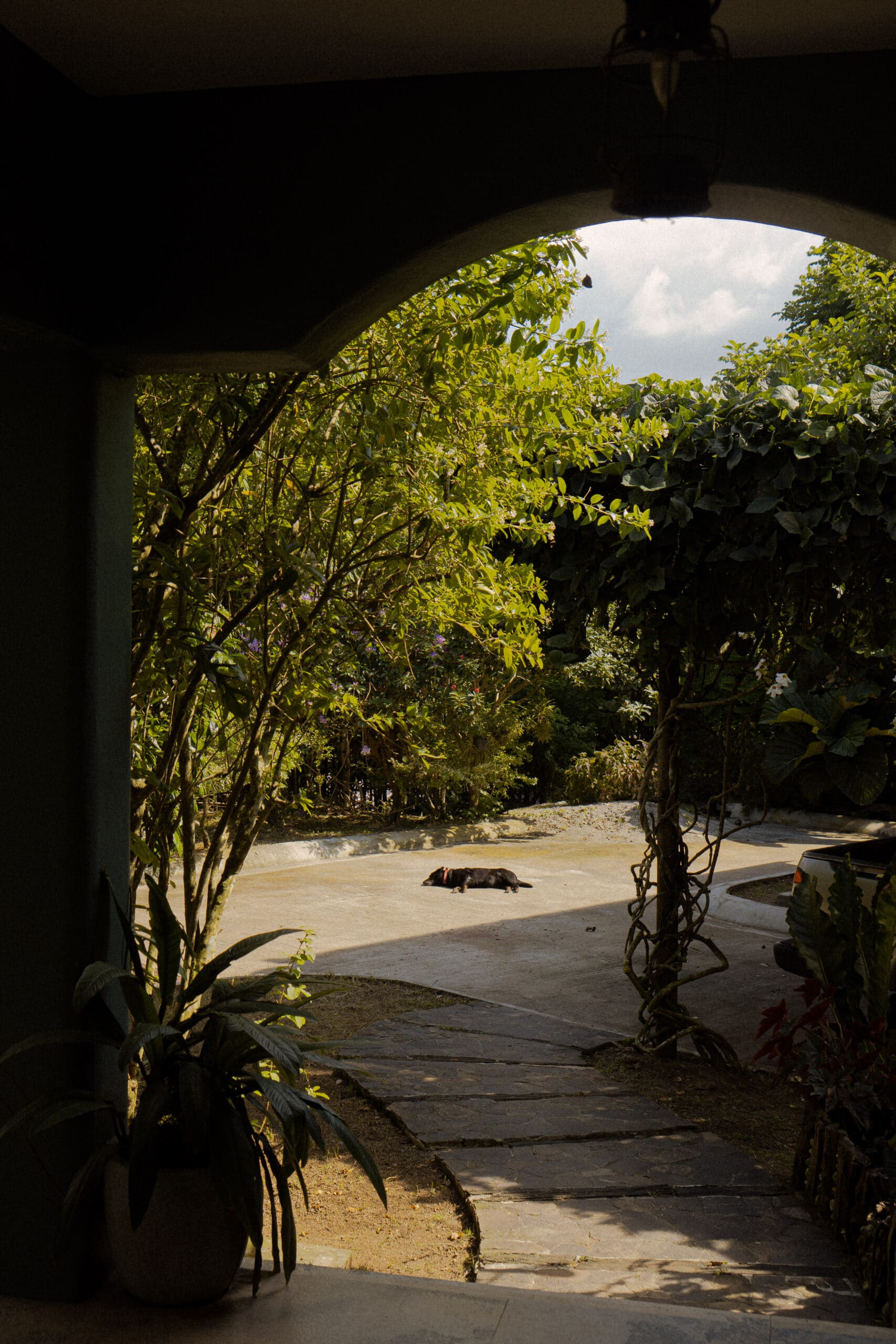
READ: Conservator Margarita Villanueva on preserving the past, present, and future of Philippine art
LS: Your process seems almost alchemical—an alchemy that uses nature as its medium.
Working with nature has trained me to be more observant and, when facing challenges, to ask questions like, ‘Why is this happening? What can I do to address this?’ For instance, I discovered a particular leaf that produces strong dyes. Through experimentation, we boiled the leaf to extract its juice, then soaked other leaves with weaker natural dyes in the concentrated solution. The leaves with weaker dyes ended up absorbing the stronger color. It felt almost magical.
PDV: What can you say about the role of women artists within the Philippine art scene today?
First of all, when I work, I work as Geraldine Javier. I don’t think of my body of work as something produced by a woman but rather as something created by me, as an individual. My work reflects my character as a human being. However, I do acknowledge the validity of concerns raised by women artists abroad, particularly regarding institutional exhibitions. There is an undeniable lack of representation of women in institutional spaces. Had the Guerrilla Girls not highlighted the statistics, there wouldn’t have been a proper discourse on the issue. The percentage of artworks by women in museums remains alarmingly low. While women artists may be underrecognized, they are undeniably talented. This raises the question: Why aren’t they given the recognition they deserve?
Here in the Philippines, the context is somewhat different. I don’t feel that we Filipino women artists are at a disadvantage in the local art scene. Perhaps this is because we don’t have enough institutions promoting our art practices, and there is generally a lack of financial support for artists. In this context, we don’t experience the same gender bias seen elsewhere, as there aren’t enough institutions to favor one gender over another.
That said, we are seeing some increased support from the private sector, with minimal backing from the government. In my experience, galleries in the Philippines don’t prioritize male artists over female artists; what matters most to them is the quality of one’s practice. Compared to countries like Indonesia and Singapore, we have many successful female artists here. As for gender politics, I believe that despite some lingering biases, there is a greater acceptance of women artists in the Philippines.
PDV: You come from a generation of Filipino contemporary artists who have made an indelible mark on the contemporary art scene. What do you think are the key reasons behind both your individual success and that of your contemporaries?
Sir Chabet taught us a very important lesson in art—that concepts should be the foundation of art-making. Through years of consistent art practice, I’ve learned a lot of craft-based skills but up to now, no one can make me work just for the sake of making beautiful works that would sell. I need a stronger motivation than that. I have to understand why I’m making what I’m making. It has to mean something.
Wire Tuazon and Keiye Miranda, both based in Angono and also mentored by Sir Chabet, were offered a space in Edsa-Ortigas in 1998. It became an extension of the tiny space that Wire opened in Angono. It was a very brave move especially at a time when the art market for young and starting artists is nonexistent. And if it doesn’t exist, there’s nothing to chase except to use the opportunity that the space gives to all who are interested in exploring different mediums without censorship. Coming from a conceptual training under Sir Chabet, I didn’t always like what we showed but the experience of running an alternative space opened up my senses to the many ways of seeing and appreciating art.
It would have been difficult and lonely for me as a young artist if I had not been part of SBW. It’s quite therapeutic having friends to share misery with.
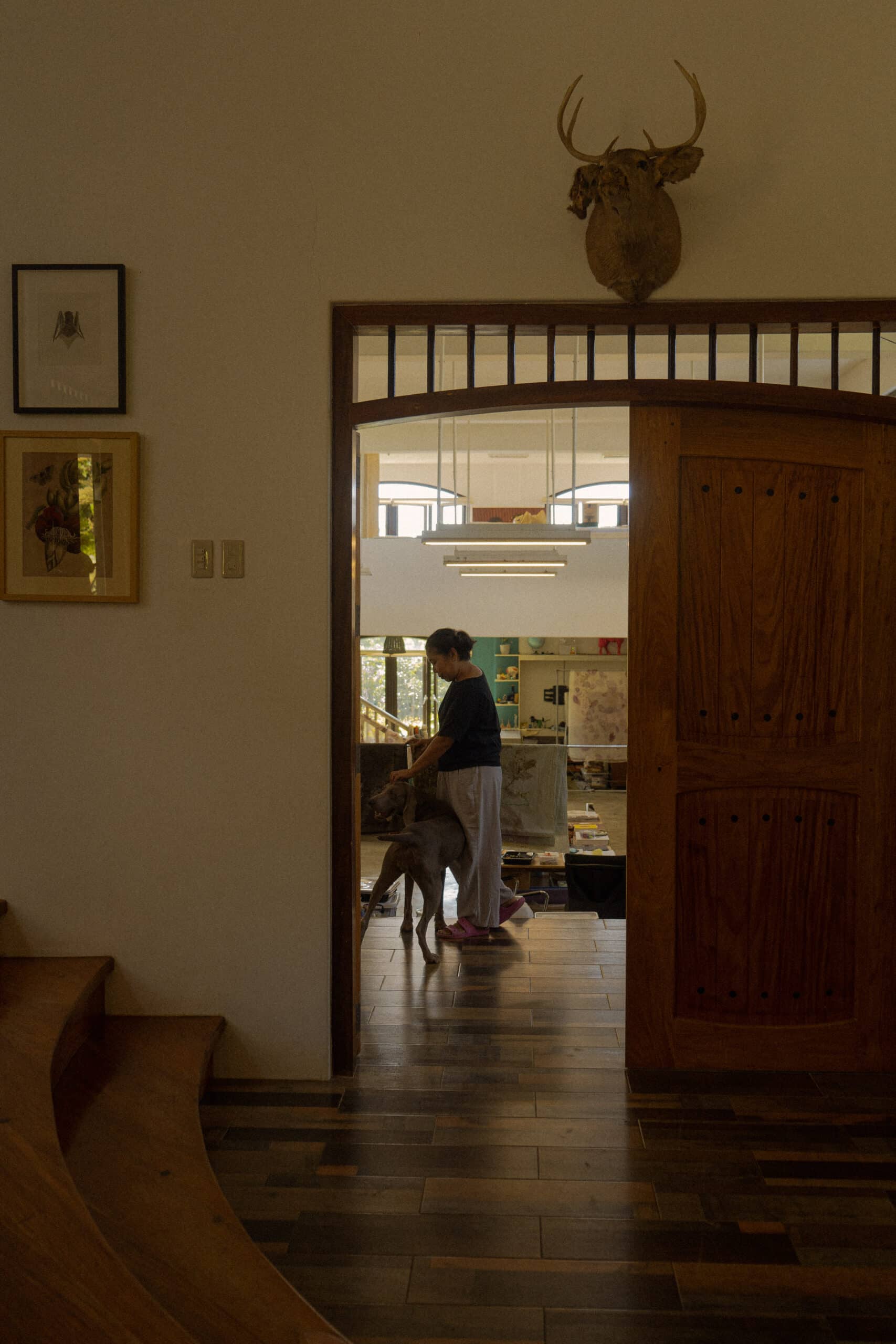
PDV: How would you wish to be remembered by the next generation of Filipino artists?
Not as a great artist, but as an artist who constantly strived to do her best—one who explored, who was never afraid to make mistakes, and who never hesitated to repeat a work if necessary. I hope to be remembered as someone who was always engaged and never insular—an artist who became deeply connected with her natural environment and community. An artist whose impact went beyond her work, someone who transformed her community not just through her art but through how she related to the people around her. Someone whose art empowered her community.
Empowering one’s community can mean different things to different people. For me, I value installation projects because they allow me to work with more people in my community. I make sure that those I work with are compensated well for their efforts. Livelihood is important, and I’ve seen mothers sacrifice so much for their families—mothers who ensured their children finish their schooling. In the beginning, these mothers didn’t know how to do embroidery, but through hard work, they eventually excelled in the craft.
For me, it’s not just a burden to think about my work but a responsibility I carry because of the tangible effect it has on the community. Seeing the mothers take pride in their work means so much to me. This kind of positive pressure motivates me to keep doing good, meaningful work.
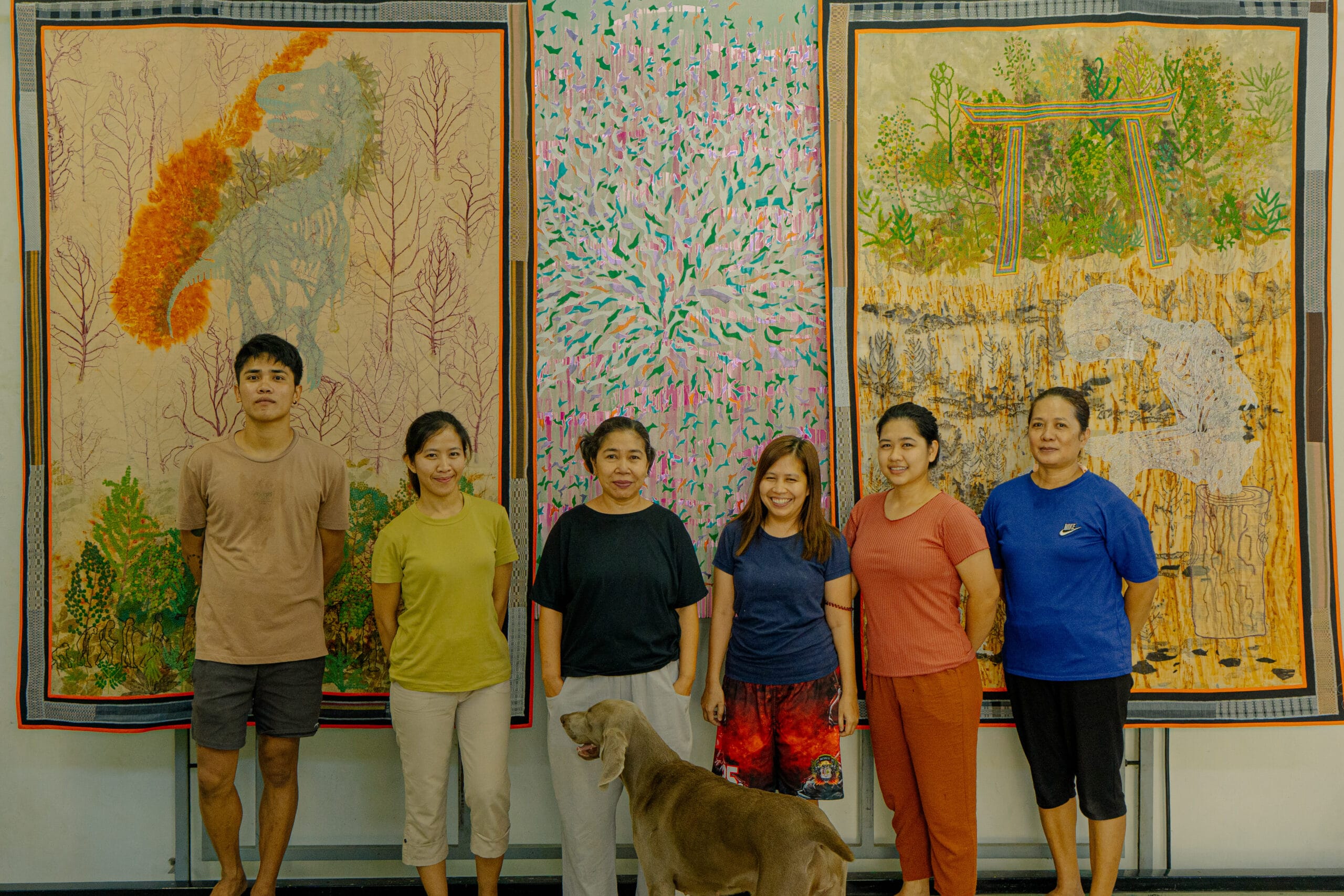
Photos by JT Fernandez
Video by Claire Salonga
Produced by Lala Singian

